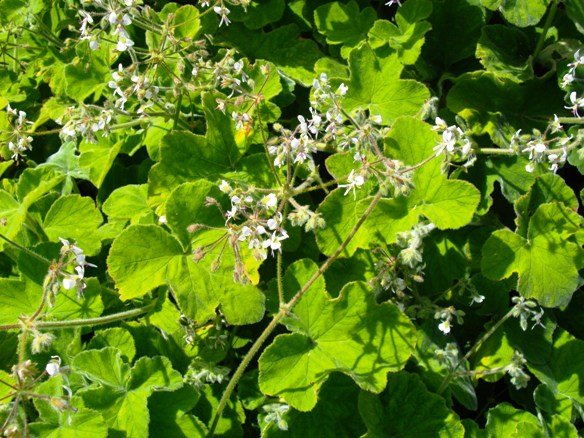Pelargonium tomentosum

Author: Ivan Lätti
Photographer: Ivan Lätti
Pelargonium tomentosum, the peppermint pelargonium, is a sprawling shrublet growing brittle stems that become woody with age. It usually reaches heights of about 50 cm, spreading to 1,5 m.
The leaves are simple, characteristically lobed, sometimes in an angular fashion. The tomentose leaves are covered in matted, curved hairs as the specific name suggests. The soft hairs create a velvety effect, also on the stems. The exceptionally aromatic feature is carried by the colloquial name, peppermint pelargonium. Some of the leaf hairs are glandular, secreting one or more essential oils. This oil brings the plant's strong peppermint scent.
Essential oils serve in nature to protect the producer plants from herbivores and pathogens. There are many kinds of these organic oil substances. Some essential oils have found their way into a wide range of human applications. This has brought about monoculture cultivation of the plants followed by distilling operations. Pelargonium is one of the genera involved in the commercial production of essential oils.
The flowers of P. tomentosum grow in umbel-like clusters on long peduncles above the leaves. The flowers are white with purple markings near the bases of all the petals. The upper two petals are bigger and broadly round-tipped, the lower three narrow. The styles are also purple, the filaments sometimes too. Blooming happens from late spring to after midsummer.
The species distribution is only in the Western Cape from Caledon to Riversdale.
The plant’s habitat is moist, semi-shaded forest margins and stream banks in coastal fynbos. The habitat population is deemed of least concern early in the twenty first century.
The plant is a good garden subject, especially as a ground cover in semi-shade. It is also a culinary herb (Bond and Goldblatt, 1984; iNaturalist; Wikipedia; www.plantzafrica.com; http://redlist.sanbi.org).

